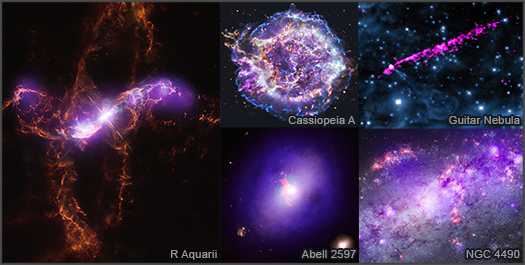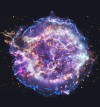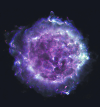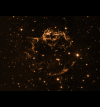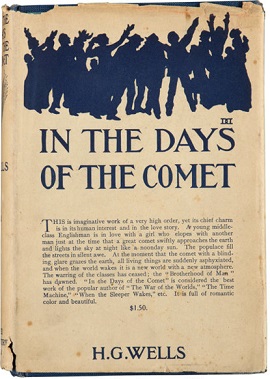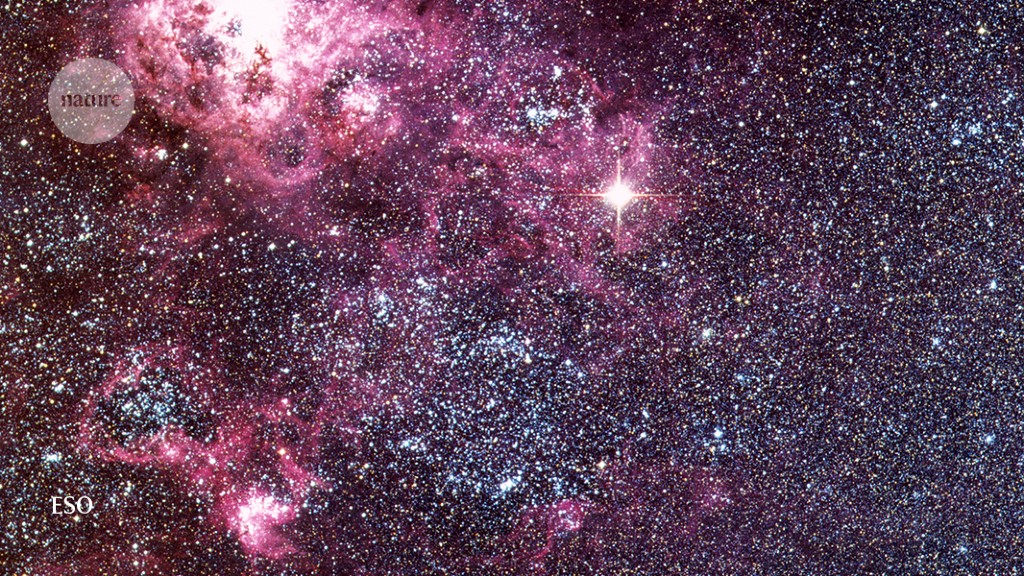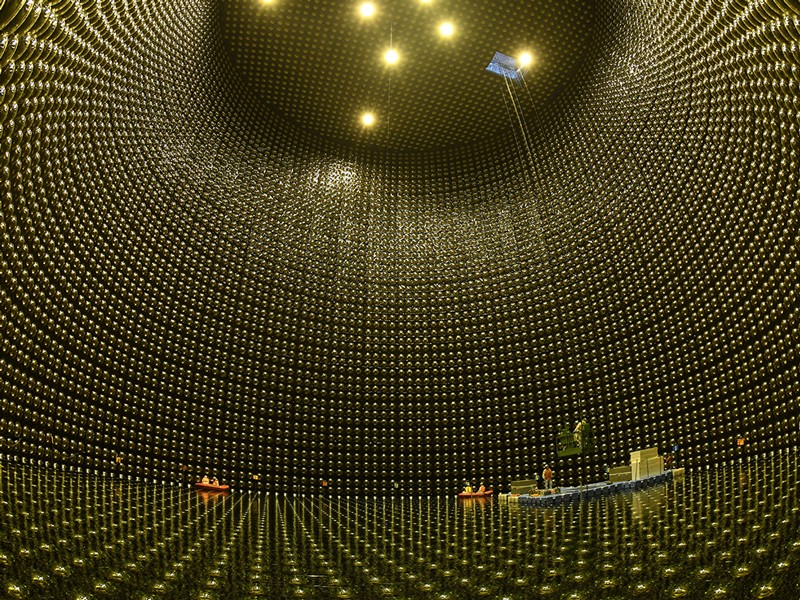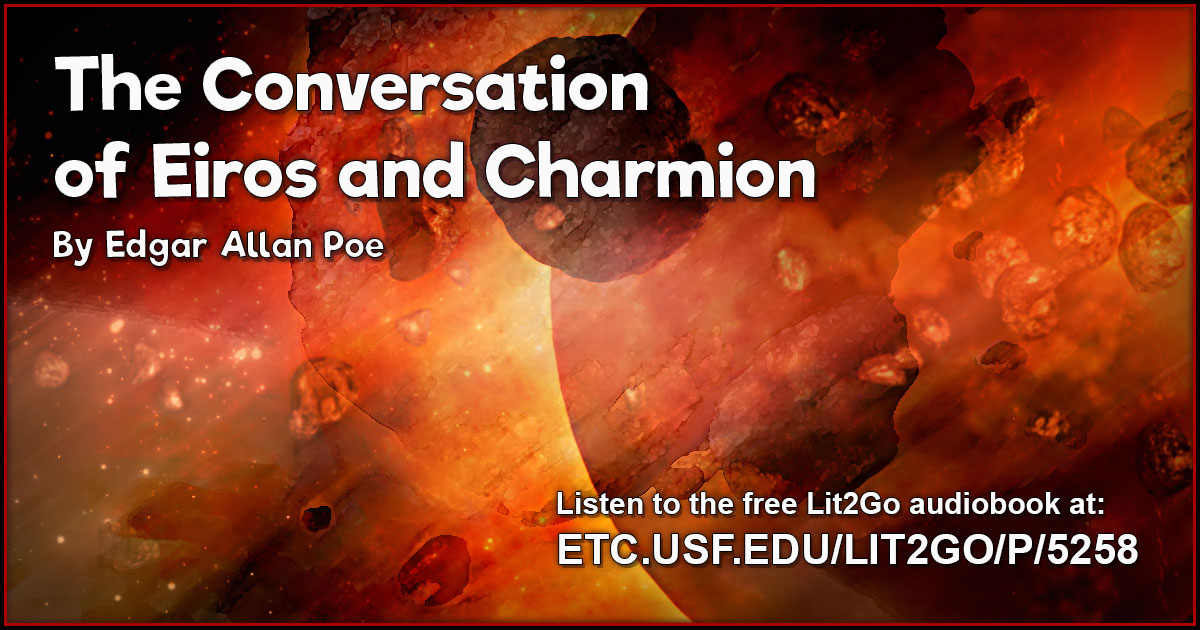He was just starting out in science the last time it happened, in February 1987, when a dot of light suddenly appeared in the southern sky. This is the closest supernova seen during modern times; and the event, known as SN 1987A, gained worldwide media attention and led to dramatic advances in astrophysics.
Nakahata was a graduate student at the time, working on what was then one of the world’s foremost neutrino catchers, the Kamiokande-II detector at the Kamioka Underground Observatory near Hida, Japan. He and a fellow student, Keiko Hirata, spotted evidence of neutrinos pouring out of the supernova — the first time anyone had seen these fundamental particles originating from anywhere outside the Solar System.
Now, Nakahata, a physicist at the University of Tokyo, is ready for when a supernova goes off. He is head of the world’s largest neutrino experiment of its kind, Super-Kamiokande, where upgrades to its supernova alert system were completed late last year. The improvements will enable the observatory’s computers to recognize when it is detecting neutrinos from a supernova, almost in real time, and to send out an automated alert to conventional telescopes worldwide.
Astronomers will be waiting. “It’s gonna give everybody the willies,” says Alec Habig, an astrophysicist at the University of Minnesota, Duluth. Early warning from Super-Kamiokande and other neutrino observatories will trigger robotic telescopes — in many cases responding with no human intervention — to swivel in the direction of the dying star to catch the first light from the supernova, which will come after the neutrino storm.
But when the light arrives, it could be too much of a good thing, says Patrice Bouchet, an astrophysicist at the University of Paris-Saclay who made crucial observations of SN 1987A, from the La Silla Observatory in Chile. The brightest events, which would shine brighter than a full Moon and be visible during the day, would overwhelm the ultra-sensitive but delicate sensors in the telescopes used by professional astronomers.
And some of the instruments Bouchet used back then no longer exist. “If η Carinae or Betelgeuse explode,” says Bouchet, referring to two well-known stars, “we are not ready to observe it as we did with ’87A.” Researchers will scramble to adapt their instruments on the fly, but the lion’s share of the observations could fall on amateur astronomers, who have smaller telescopes and are in many cases very proficient at using them.
The scientific pay-off will nevertheless be immense. Supernovae have rarely been observed up close, but they are crucial for understanding how the chemical elements that were forged inside stars by nuclear fusion disperse across galaxies. And the stellar explosions themselves synthesize elements that would not exist otherwise. The neutrinos that Nakahata and others hope to capture will provide a unique window into the extreme physics that goes on inside an exploding star, and could lead to important discoveries about the fundamental forces and particles of nature.
New light
It was early in the morning of 24 February 1987, when Ian Shelton, the staff telescope operator at a Canadian observatory in Las Campanas, Chile, spotted an unexpected dot of light. It appeared on some routine exposures he had just taken of the Large Magellanic Cloud, a small galaxy that orbits the Milky Way and is visible in the southern sky.
Shelton immediately realized that this could be a significant event. He stepped outside to look with his own eyes and, sure enough,
noticed a bright star that had not been there before. It was the first such stellar object to be visible with the naked eye since the German astronomer Johannes Kepler recorded one in 1604.
Supernovae are among the most energetic cataclysms in the cosmos, shining for a period of weeks or months, and in some rare cases emitting more light than an entire galaxy. Supernova explosions comprise several types, but the most common occurs at the end of the life of a very large star — one somewhere between 8 and 140 times the mass of the Sun.
The star runs out of fuel for the nuclear fusion that had been powering it, leaving behind an inert core of iron and nickel in a state of plasma. The outer layers of the star begin to fall inwards, and the core starts to collapse. In a span of milliseconds, most of the matter in the core gets so compressed that protons and electrons combine to form neutrons. The core’s density suddenly rises by several orders of magnitude, because neutrons take up much less space than plasma. The neutrons pack into a denser ball — as dense as the laws of physics permit, forming what Habig calls a proto-neutron star inside the core.
The formation of each neutron releases a neutrino, and so the core’s collapse releases a brief initial burst of neutrinos. But the cataclysm has only just begun. “The rest of the star is raining down on that proto-neutron star,” says Habig. After falling for thousands of kilometres in an intense gravitational field, the material hits the hard surface of the neutron core, bouncing back with a shock wave that propagates outwards. The shock wave is so violent that the rest of the star disintegrates, leaving only the neutron star as a remnant, which weighs around twice as much as the Sun.
During the collapse itself, the energy released by the falling matter smashes elementary particles together as happens in a high-energy collider, continuously turning energy into new particles of all kinds. “It’s so incredibly hot and dense, everything is happening,” says Kate Scholberg, an astrophysicist at Duke University in Durham, North Carolina.
Most of those particles have nowhere to go and keep bumping into each other — with one exception. When a collision produces a neutrino, that particle will have a high chance of escaping into outer space without hitting anything else. As a result, many neutrinos are produced over a period of ten seconds or more. Researchers estimate that SN 1987A ejected 1058 of these particles.
On these time scales, neutrinos are by far the dominant way in which the supernova dissipates energy. Although the shock wave can take many hours to make it through the outer layers of the star and to become visible, neutrinos come out right away, practically at the speed of light. More than 99% of the energy from a core-collapse supernova escapes not as light, but as neutrinos.
Eventually, most of the star’s original mass disperses into interstellar space. Over the following eons, it will trigger the formation of new stars and planets; our Solar System might have formed that way, some 5 billion years ago.
The centre cannot hold
On average, one or two Milky Way stars per century undergo core collapse, according to the most recent estimates
1. Yet throughout history, only five supernovae have been recorded as being visible with the naked eye, with two thought to be of the core-collapse type
2. There are various reasons for this discrepancy. If enough mass concentrates in the collapsing core, it forms a black hole without producing much of a light show. In perhaps the majority of cases, an explosion does happen, but remains hidden from view by thick interstellar dust in the plane of the Milky Way, where massive stars reside.
Fortunately, the same physics that lets neutrinos escape a star’s core will also let them cross the dusty Galactic Centre unimpeded. This means that neutrino detectors on Earth will pick up a shower of neutrinos no matter what, and so will record collapsing stars that would not have been detected by any other means.
And what a shower it will be. In 1987, Kamiokande-II was one of the world’s largest neutrino detectors. Its 3,000 tonnes of water picked up 11 neutrinos; experiments in Ohio and Russia captured a handful, too. If a similar event were to occur today, Super-Kamiokande, which opened in 1996 and holds 50,000 tonnes of water, would spot at least 300 of the particles — and many more if the supernova occurs in our Galaxy, as opposed to in the Large Magellanic Cloud.
Beginning in 2018, Super-K, as the observatory is known,
had an upgrade that has vastly improved its ability to study supernovae. In particular, the Super-K collaboration, which includes Japanese and US physicists, added the rare-earth metal gadolinium to the detector’s water. Its presence will enable the detector to clearly distinguish two types of supernova neutrino. One type produces flashes inside the detector that propagate in a random direction. But the flashes from the other type point straight back at the direction in which the neutrino was travelling.
Being able to tell the two apart in real time means that Super-K’s software will rapidly calculate where in the sky astronomers should point their telescopes, within an angle of less than 3 degrees. “Using this information, Super-K is the world’s best detector for determining the direction to a supernova,” says Nakahata.
The supernova alert system, called SNWatch, is programmed to notify senior collaboration members about a possible sighting. At the same time, it sounds an alarm in the detector’s cavernous underground hall and control room. Sara Sussman, a physicist now at Princeton University in New Jersey, spent time working at Super-K in 2017 during her undergraduate studies, and experienced the alarm in person. It went off during her first stint as the shift operator in the Super-K control room, and Sussman didn’t know it was a drill. “I’m never gonna forget that moment for the rest of my life,” she says.
Until recently, the Super-K procedures in case of a supernova prescribed that a senior team would hold an emergency meeting to decide whether the signal was genuine, and whether to send the news out. Starting last December, the collaboration removed any need for human intervention. In case of a neutrino shower, SNWatch will send an automated alert — including the event’s coordinates in the sky — to astronomers within 5 minutes, Nakahata says. Future improvements in the software should bring that down to 1 minute, he adds.
This will be a far cry from how information spread following the discovery of SN 1987A. The Chilean mountaintop of Las Campanas where Shelton worked did not even have a telephone line, and its radio telephone rarely worked. To alert other researchers to the scientific treasure that had just appeared, observatory staff had to drive to the nearest town, two hours away, and send a telegram.
On alert
Neutrino alert systems are not new: one has existed for nearly two decades. The Supernova Early Warning System (SNEWS) is a network involving Super-K and several other neutrino observatories. It includes IceCube, an array of light sensors embedded in a cubic kilometre of Antarctica’s ice, and KM3NeT, a similar array submerged in the Mediterranean Sea. Large neutrino facilities now under construction in the United States and China are expected to join in the next few years, and Japan is building Hyper-Kamiokande, which will be five times larger than Super-K. “We expect 54,000–90,000 neutrinos if a supernova explodes in the centre of the Galaxy,” says Francesca Di Lodovico, co-spokesperson for the Hyper-Kamiokande detector.
The main idea of SNEWS is to combine signals to improve the confidence in a detection, even if the individual ones look marginal at best. Each detector runs software that notifies a central SNEWS server of any unusual activity. SNEWS sends an alert to astronomers only if neutrino detectors in two separate geographical areas see a spike in activity within 10 seconds of each other. “If two see something and are not in the same lab, then it would be really hard for something random to happen in Japan and Italy, say,” says Habig.
A team uses boats to work inside the Super-Kamiokande detector near Hida, Japan.Credit: Kamioka Observatory/Institute for Cosmic Ray Research/The University of Tokyo
Scholberg and Habig began working on SNEWS in the 1990s, a few years after SN 1987A made researchers realize the importance of getting neutrino alerts out quickly. Kamiokande-II had no live reporting system at the time. Nakahata and Hirata were charged with looking for supernova neutrinos after the fact; they printed out several days’ worth of the detector’s raw data — hundreds of pages of continuous-feed paper, the type with perforated edges — and
inspected it visually to find the bump.
Since SNEWS went live in 2005, it has not had the opportunity to send out a single alert. “You’ve got to admire the tenacity and the endurance,” says Robert Kirshner, an astronomer at Harvard University in Cambridge, Massachusetts. “They know they’re right, they know it’s important — but they’re not getting rewarded a lot.”
Now, SNEWS is about to roll out its first major upgrade, called SNEWS 2.0
3. One goal is to produce alerts on the basis of lower-confidence sightings of possible supernova neutrinos. Observatories used to be conservative about sending out alerts, wanting to avoid any risk of false alarms. But in recent years, the culture has changed, and researchers are more comfortable exchanging lower-confidence alerts, just in case.
“The attitude has flipped 180 degrees,” Habig says. This change was brought in part by the advent of gravitational-wave astronomy, which yields weekly or even daily signals that many astronomers follow up using ordinary telescopes. That way, the same event can be studied using different astronomical phenomena, a trend called multi-messenger astronomy.
Another innovation of SNEWS 2.0 is that when multiple observatories record a neutrino shower, it will compare the exact timings of the particles’ arrival, and use those to triangulate back to the source. The pointing will be vastly less precise than that provided by Super-K alone, but the triangulation might end up being even faster, Habig says.
Too much light
When Shelton spotted SN 1987A, Bouchet was in the right place at the right time. He had been working at the European Southern Observatory in La Silla, where he used a special device that could make infrared measurements of stars during the daytime. This meant that Bouchet could continue to measure the supernova’s brightness even when daylight in the sky drowned out the visible light from stars. But the telescope Bouchet used has been decommissioned, and no modern observatory has the right equipment to make daytime infrared measurements.
What’s worse, Bouchet adds, is that most large observatories have decommissioned their smaller visible-light telescopes, focusing on the largest, most sensitive instruments, which could be useless for observing a bright event. But Danny Steeghs, an astronomer at the University of Warwick, UK, is more optimistic. There has been a renaissance in ‘small astronomy’, he says, spurred in part by multi-messenger astronomy. “Now we have a new generation of more-bespoke, smaller telescopes,” Steeghs says. When a supernova happens, he says, “we might miss the very first stages, but I am sure everyone will be creative.” Steeghs runs the Gravitational wave Optical Transient Observer, a system that can rapidly cover a large part of the sky to chase after possible light associated with gravitational waves.
“Even in the case of a really bright one, astronomers are clever and will find a way,” says Andy Howell, senior scientist at the Las Cumbres Observatory. Las Cumbres is an organization based near Santa Barbara, California, which runs a network of robotic telescopes that together give global coverage of the sky. “We could observe the supernova around the clock, since we always have telescopes in the dark.”
To observe extra bright objects, astronomers might use tricks such as taking short exposures, or partially blacking out the telescope’s mirror so that it reflects less light. But one of the most crucial observations — measuring the supernova’s brightness and how it evolves over time — will be difficult to do precisely. Astronomers usually measure a star’s brightness by calibration, by comparing it to that of another, well-known object in the same field of view. But calibration is difficult when the object of study is so bright that no other star can be seen in the same shot.
 The golden age of neutron-star physics has arrived
The golden age of neutron-star physics has arrived
If professional astronomers stumble, an army of serious hobbyists might come to the rescue, Bouchet says. The American Association of Variable Star Observers (AAVSO), headquartered in Cambridge, Massachusetts, will help to coordinate the efforts of amateur astronomers, many of whom will be eager to jump in. “They would be on it — some of them within minutes,” says Elizabeth Waagen, an astronomer who has been on the AAVSO staff for 40 years and helps to coordinate observer campaigns.
“We are everywhere,” says Arto Oksanen, an IT professional based in Jyväskylä, Finland, who is a celebrity in the world of amateur astronomy. “At any given time, there is someone that can observe under clear skies.” Oksanen is the chair of a club of observers that built and runs its own remotely operated observatory, with a 40-centimetre reflector telescope and an automatic dome, some 300 kilometres north of Helsinki.
To take measurements of a very bright supernova, even smaller telescopes will do. Oksanen says that if the object is extremely bright — and assuming it is visible in the Finnish sky — the first thing he would probably do is take pictures with his Nikon digital SLR camera. With a supernova, time is of the essence, and even this rough method would record invaluable information about how the explosion varies in brightness.
But Tom Calderwood, an amateur astronomer in Bend, Oregon, says that few serious hobbyists have made such contingency plans to prepare for a possible supernova. “It’s definitely worth it for the amateur community to sit down and think what they would do,” he says.
The supernova of 1987 changed many lives overnight. Shelton decided to pursue a PhD in astronomy. Bouchet spent much of the next year on the Chilean mountaintop and has been studying the supernova and its remnants ever since, as has Kirshner, who has been involved in the search for SN 1987A’s neutron-star remnant. That’s something he could soon help to nail down using NASA’s recently launched
James Webb Space Telescope, which might be able to detect infrared radiation from the remnant that makes it through the surrounding shroud of dust. Nakahata’s boss at the time, the late Masatoshi Koshiba, shared a Nobel physics prize in 2002 for his work using Kamiokande-II, in large part for detecting the 11 supernova neutrinos.
Waagen says that many young people can trace the time when they became interested in astronomy — or science in general — to a specific day, when “some spectacular event caught their imagination and changed the course of their lives”. The next supernova will change a lot of lives, too, she says. “It will connect them to the sky in a new way.”
“It will be wild,” says Ed Kearns, a particle physicist at Boston University in Massachusetts. “I don’t know exactly what’s going to happen, because there’s so much human nature involved.” No supernova neutrinos have been detected since 1987, but it could happen any time, he adds. “Every year is a fresh year, every day is a fresh day for a chance at a supernova.”
Nature 602, 562-565 (2022)
doi: A supernova could light up the Milky Way at any time. Astronomers will be watching

